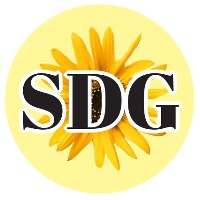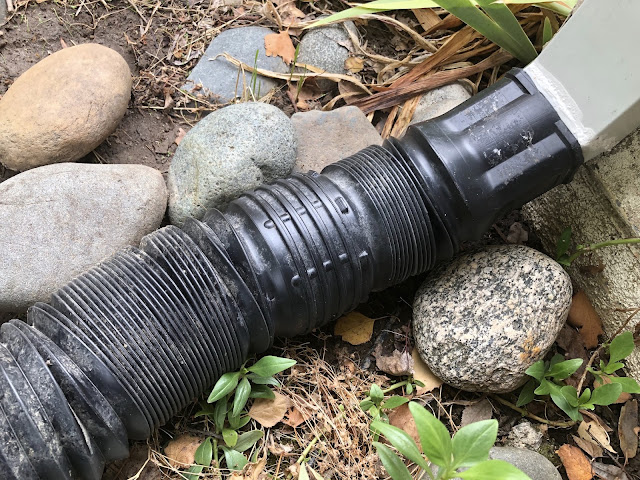
Storm revealed drainage problems; tips for how to redirect all that water

|
| The easiest way to direct runoff away from a home's foundation is with a downspout extension. But depending on the landscape, the location and the home's footprint, a more permanent drainage solution may be necessary. (Photos: Kathy Morrison) |
The aftermath of Sunday’s record rainfall was a physical reminder of a basic law of nature: Water tends to accumulate at the lowest spot. If you didn’t know where that was in your yard, you do now
So much rain after years of so little created instant lakes in landscapes that are now taking days to drain.
Where did all this water come from? Often, off your roof.
Rain gutters – in particular, the misdirection of runoff from those gutters – can lead to drainage problems. Typically, downspouts run straight down off the roof to the ground – ending close to the house and foundation. That causes water to pool around the building and potentially leak inside into basements or crawl spaces.
The solution: Extend the downspouts away from the house and foundation. Ideally, the extensions should take rainwater at least 10 feet away from the house.
If that’s not enough, a “perimeter drain” – a gravel-topped trench around the house – can help prevent water from getting into basements or crawl spaces. This drain redirects the water to a safe release point away from the foundation.
A similar technique is a “French drain” – a buried perforated pipe that collects water and directs it away from the low spot.
Despite the name, French drains have nothing to do with France. According to experts, these unusual drains were invented by an American, Henry Flagg French. He popularized them in his book on agricultural drainage, published in 1859 in Massachusetts.
Such drains can be simple to install – dig a trench, put it in – but must be strategic. (Where do you want the water to go?)

|
|
The drainage aisle of a local Ace Hardware store was looking picked-
over Tuesday, but these NDS catch-basin drain grates were still in
stock.
|
Water tends not to drain well through clay; that’s why the backyard “lake” formed in the first place. If you cover the French drain with clay soil, it plugs up the drain and doesn’t give it a chance to work.
Instead, backfill over the drain with sand, gravel, decorative rock or other fast-draining material.
Use that clay dirt to form berms to redirect rainwater away from the house and to that gravel-covered French drain.
Those berms also could form a “rain garden,” catching stormwater and allowing it to soak in where you want it – not next to the house.
Need more help? NDS, which makes a broad range of water-related products, offers tips for how to tackle drainage issues at its online Home Drainage Center. Find it here: https://www.ndspro.com/home-drainage .
Comments
0 comments have been posted.Sacramento Digs Gardening to your inbox.
Sites We Like
Garden Checklist for week of July 21
Your garden needs you!
* Keep your vegetable garden watered, mulched and weeded. Water before 8 a.m. to reduce the chance of fungal infection and to conserve moisture.
* Feed vegetable plants bone meal, rock phosphate or other fertilizers high in phosphate to stimulate more blooms and fruiting. (But wait until daily high temperatures drop out of the 100s.)
* Don’t let tomatoes wilt or dry out completely. Give tomatoes a deep watering two to three times a week.
* Harvest vegetables promptly to encourage plants to produce more. Squash especially tends to grow rapidly in hot weather. Keep an eye on zucchini.
* Pinch back chrysanthemums for bushy plants and more flowers in September.
* Remove spent flowers from roses, daylilies and other bloomers as they finish flowering.
* Pinch off blooms from basil so the plant will grow more leaves.
* Cut back lavender after flowering to promote a second bloom.
* It's not too late to add a splash of color. Plant petunias, snapdragons, zinnias and marigolds.
* From seed, plant corn, pumpkins, radishes, winter squash and sunflowers.